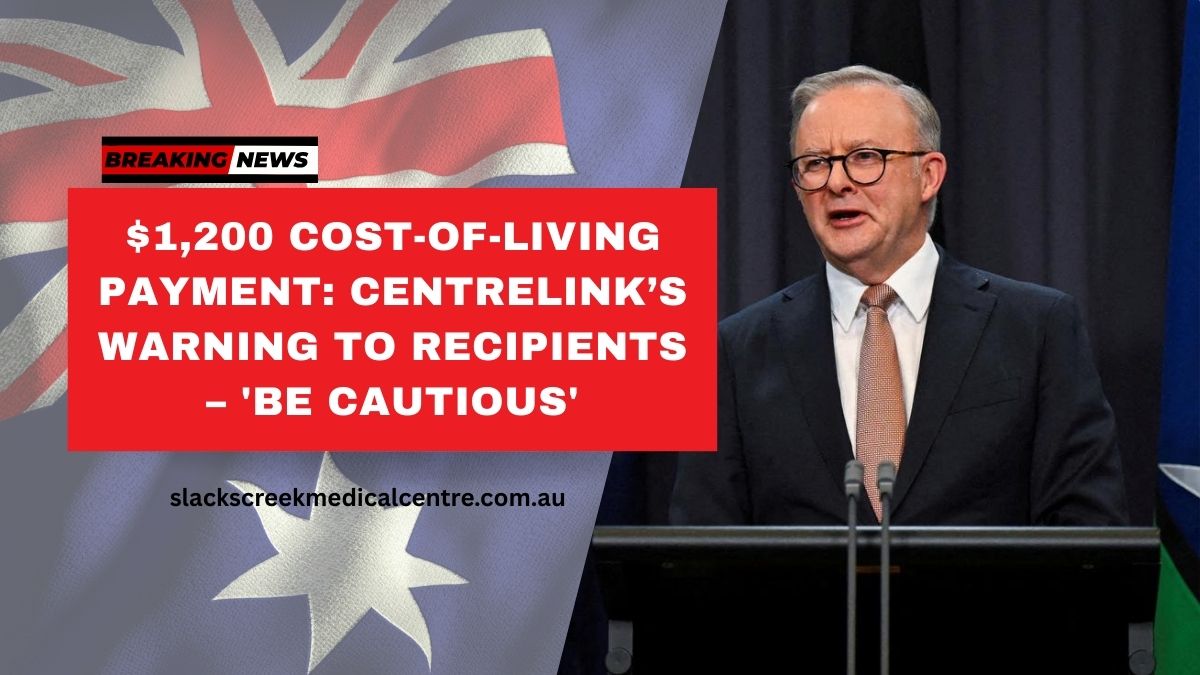Services Australia has issued a warning to the public regarding fraudulent claims about Centrelink payments circulating online.
These scams are targeting vulnerable Australians who may be struggling financially, and scammers are exploiting this situation by offering false promises of financial aid.
Scam Alert: Fake Claims of $1,200 “One-Off” Payment
Recently, a woman named Kate inquired about the availability of a supposed Centrelink “one-off” $1,200 payment. However, Services Australia clarified that this was part of a scam circulating online. The agency made it clear that no such additional payments had been announced.
“We have not made any statements regarding one-off, bonus, or cost of living payments,” said a Services Australia spokesperson. The agency emphasized the importance of being cautious when encountering unofficial websites and social media accounts that promote false information about these payments.
Identifying Fake Websites and Scams
According to Services Australia, scammers have set up fake websites claiming to offer one-off or bonus payments to vulnerable individuals, especially retirees.
These fraudulent websites are trying to convince people that they are eligible for quick cash. However, Services Australia has reiterated that any website not ending with .gov.au is not official and could be a scam.
“If the URL doesn’t end in .gov.au, then it is not an official government website, and it could be a scam,” the agency stated.
To keep up-to-date on legitimate changes to Centrelink payments or services, Australians should refer only to official websites and social media accounts from Services Australia.
What Should You Do if You Encounter These Claims?
If you come across a suspicious site or social media post claiming a Centrelink payment, do not click on any links. Scammers often trick people into revealing personal information such as names, addresses, or email addresses.
According to a National Anti-Scam Centre spokesperson, this is typically how scammers begin their fraudulent activity. They may contact victims via social media, text messages, or emails, leading them to phishing websites or even calling to threaten legal actions such as immediate arrest or deportation.
The Anti-Scam Centre also pointed out that government organizations will never send text messages or emails with links to log into myGov or other online services.
Types of Scams: Not Just Centrelink
The Anti-Scam Centre explained that the issue extends beyond just Centrelink scams. Fraudsters impersonate trusted organizations, businesses, and even family members to steal money and personal details.
Scammers often disguise themselves as representatives of reputable bodies like myGov, Service Australia, Centrelink, or the Australian Taxation Office to gain the victim’s trust.
Sometimes, scammers also claim to be from international government bodies, including in scams like the Chinese Authority scam.
How to Protect Yourself from Scammers
- Avoid Clicking Links: Never click on links from unknown or unsolicited sources, especially if they ask for personal information.
- Check Website URLs: Ensure that the website’s URL ends in .gov.au to confirm its authenticity.
- Report Suspicious Activity: If you encounter a suspicious website or message, report it to Services Australia or the National Anti-Scam Centre immediately.
How to Identify Fake Centrelink Websites
| Red Flag | What It Means |
|---|---|
| Website URL doesn’t end in .gov.au | It is not an official government website. |
| Request for personal information | Scammers are attempting to steal your data. |
| Promises of quick cash or one-off payments | These offers are often part of scams. |
| Unsolicited text messages or emails | Government agencies will not send links. |
Scammers continue to prey on Australians through fake claims of Centrelink payments and bonus cash offers.
It is essential to stay vigilant and always verify information through official government channels. If you encounter a scam, report it immediately and avoid providing any personal details.
FAQs
What should I do if I encounter a suspicious Centrelink payment claim?
Do not click on any links. Always check the URL and report the suspicious site to Services Australia.
How can I identify a fake government website?
A genuine government website will always end in .gov.au. If it does not, it is likely a scam.
Will Services Australia send me a link to log into myGov through email or text?
No, Services Australia will never send links to log into myGov via email or text message. Always go directly to the official site.

